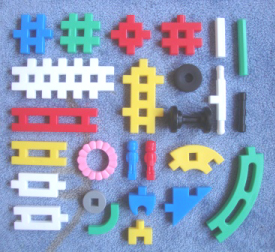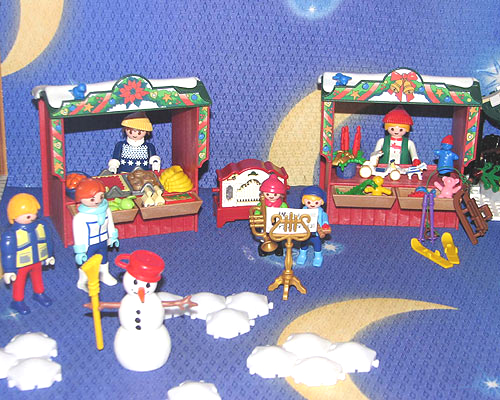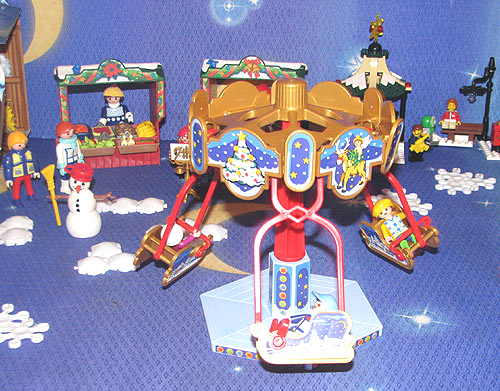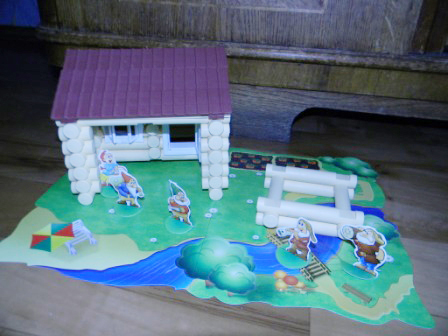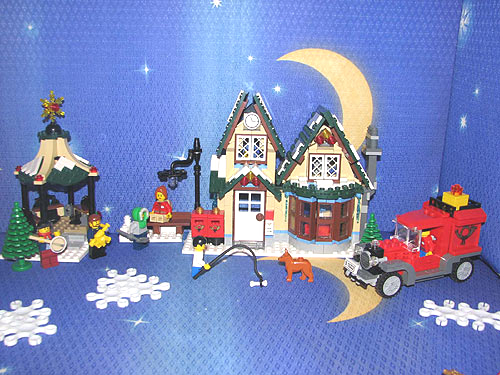All the basic Gakken waffle pieces we have.
Unlike Plus Plus waffle blocks, Gakken blocks have pieces of many different shapes. They have round and curved pieces, long beams and H-like pieces. The empty spaces inside the blocks also can have different sizes and shapes, so you can stack inside different pieces in different positions. All this allows even more building possibilities than the waffle blocks sets with similar pieces. However, some pieces have less connection opgtions, because they don’t have pegs on the sides, or have only one hole.
Gakken brand appeared in Tokyo back in 1946 when it became an important component of Japan’s post-war efforts to rebuild the nation. Back then, it became incredible important to properly raise a new generation that will be able to create a better future.
The founder and educator, Hideto Furuoka, created first basic Gakken waffle pieces. He later told that his inspiration was traditional Japanese wooden houses. There he saw an idea of flat blocks people can took apart and rebuild again when they need to. So he decided to create a toy which repeats this principle. Children can connect these Japanese waffle building blocks, stack them, lay them, plug, or tuck blocks in different orientations, for example, horizontally, vertically, and diagonally.
